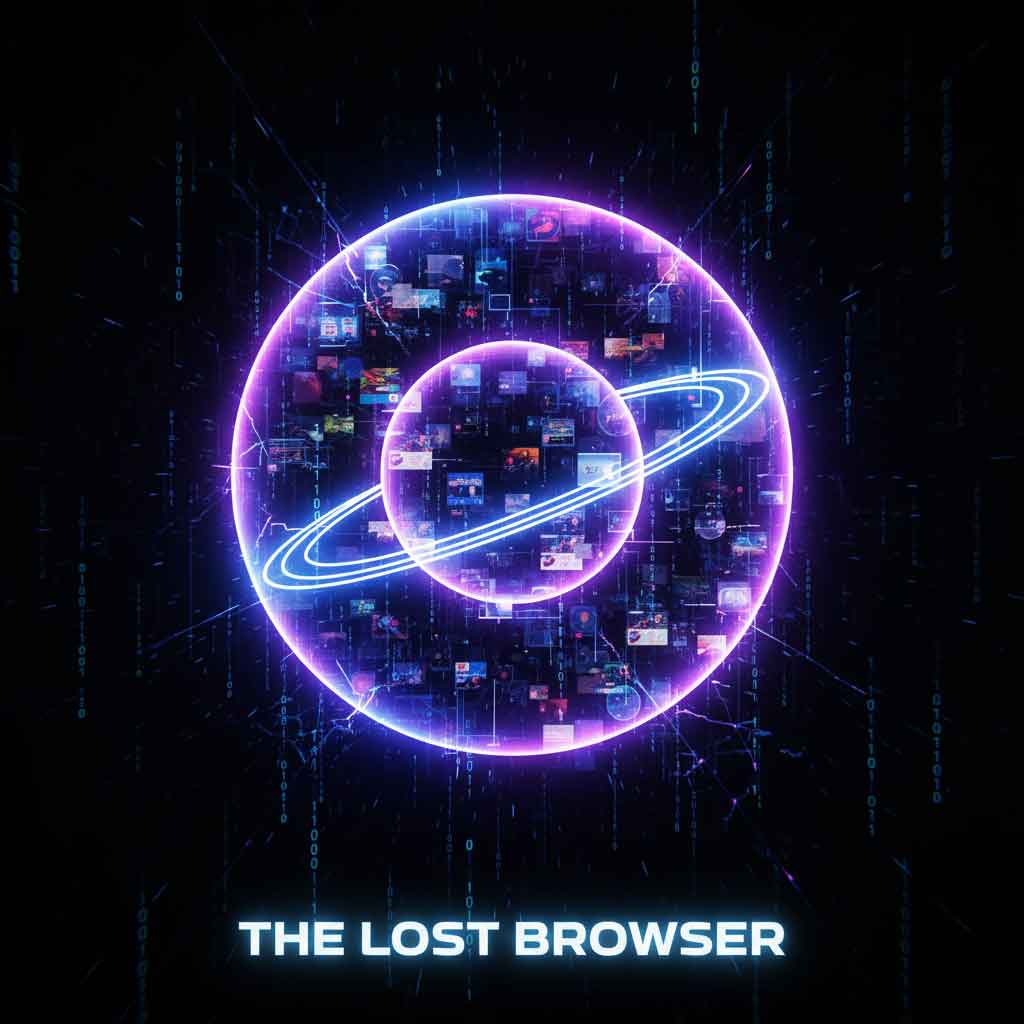
The Ghost of Browsers Past: A Look Back at Opera Neon in 2025
Published: October 1, 2025
Every so often in the tech world, something appears that is less of a product and more of a statement. It flashes brilliantly, captures our imagination, and then vanishes, leaving us to wonder what happened. Here in late 2025, if you search for "the coolest web browser ever," you'll inevitably stumble upon a name from the past: Opera Neon.
For those who were there, the name brings back memories of a fluid, futuristic interface that felt like it was plucked from a sci-fi movie. For those just discovering it, it looks like a browser that is somehow still ahead of its time. This leads to the inevitable question that people are still asking today: What happened to Opera Neon, and why aren't we all using it?
A Quick Rewind: What Was Opera Neon?
Cast your mind back to January 2017. The browser landscape was stable, if a little stagnant. Chrome, Firefox, and Opera's main browser all adhered to the same fundamental design: tabs on top, an address bar below, and bookmarks tucked away.
Then, Opera Neon arrived.
It wasn't launched as a replacement for the main Opera browser. Instead, it was billed as a "concept browser." Think of it like a concept car at an auto show. A car company will showcase a vehicle with impossible curves, radical technology, and a wild interior, not because they plan to sell that exact model, but to test ideas and show the world their vision for the future.
That was Opera Neon. It was a beautiful, functional experiment designed to answer the question: "What if we built a browser from scratch, free from the conventions of the past?"
The Features That Made Us Fall in Love
Neon didn't just feel different; it behaved differently. It was built on a custom physics engine that gave its elements a sense of weight and life. It was a browser that felt tangible.
Key features that captured our attention included:
- A Visual, Right-Side Tab Bar: Instead of a row of favicons at the top, Neon used circular "bubbles" for your open tabs on the right side of the screen. They floated, they responded to gravity, and they were a joy to manage.
- Wallpaper Integration: Neon used your desktop wallpaper as its start page, creating a seamless, beautiful transition from your OS to your browser.
- Split-Screen Mode: Long before it became a standard feature in many operating systems, Neon allowed you to view two web pages side-by-side in the same window, effortlessly.
- Integrated Media Tools: It had a built-in video pop-out player, a snapshot gallery, and a media player, all neatly organized in a left-hand sidebar.
It was, in a word, stunning. But it was never meant to last.
So, Where Is Neon in 2025?
This is the straightforward answer: The standalone Opera Neon project is defunct. It was a one-time release that received maybe one minor update before its development was permanently halted. It is no longer supported, promoted, or available for download from any official Opera channels.
Why? Because it fulfilled its mission. The experiment was a resounding success. Opera's developers gathered invaluable data on which features resonated with users and which were more novelty than utility.
A crucial warning for 2025: You might find old installers for Opera Neon on third-party download sites. Do not install it. Running a browser that has not been updated in over eight years is a massive security risk. It lacks countless critical patches that protect you from modern malware, phishing attacks, and other online threats.
The Legacy: Neon's Spirit Lives on in Your Browser Today
While the Neon browser is a ghost, its spirit is very much alive. It wasn't a failure; it was an incredibly successful research and development project whose DNA was passed on to its siblings.
Many of the features that Neon pioneered were refined and integrated directly into the main Opera browser and its hugely popular gaming-focused cousin, Opera GX.
- The Video Pop-out became a beloved, standard feature in Opera.
- The concept of a left-hand sidebar for key tools like messengers, players, and settings is now a defining characteristic of Opera and Opera GX.
- The visual-first approach and emphasis on aesthetics heavily influenced the modern, clean design of Opera's current offerings.
- Features like Workspaces in the main Opera browser are a logical evolution of Neon's split-screen mode, allowing for better organization and multitasking.
Conclusion: A Concept That Shaped the Future
Opera Neon was a browser ahead of its time. It was a beautiful, bold experiment that reminded us that the tools we use every day don't have to be boring. It was never destined to be your daily driver, but its influence was profound.
So, when you use the sidebar in Opera GX to quickly check Discord, or pop out a YouTube video to float over your work, you're experiencing the legacy of Neon. It may be gone as a product, but its vision for a more interactive, beautiful, and content-focused web experience lives on.
